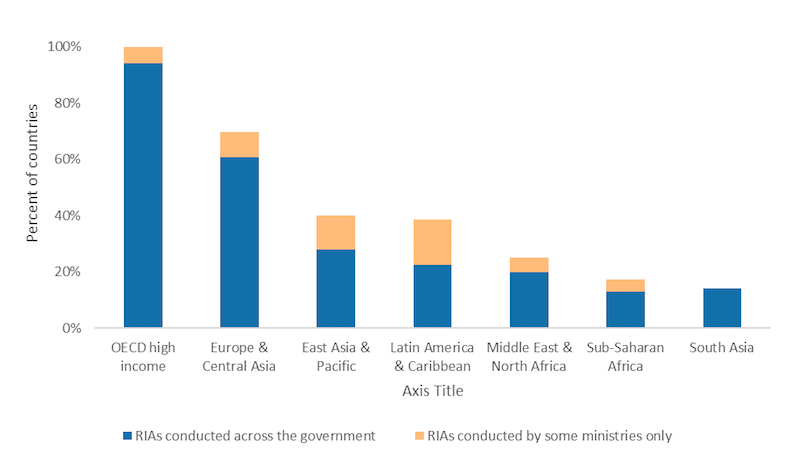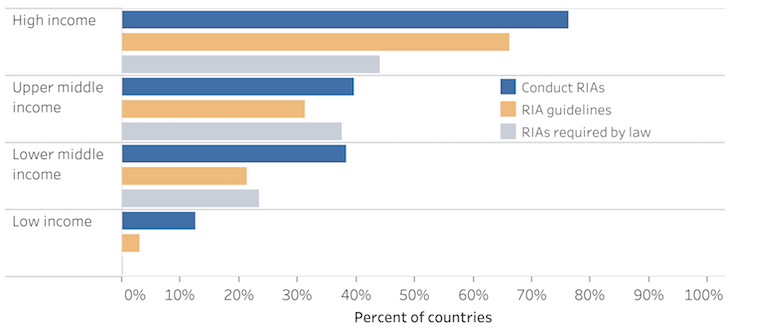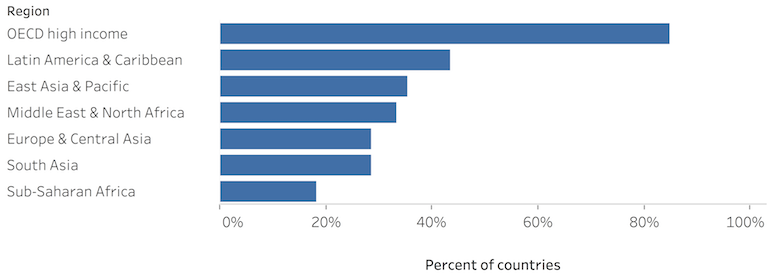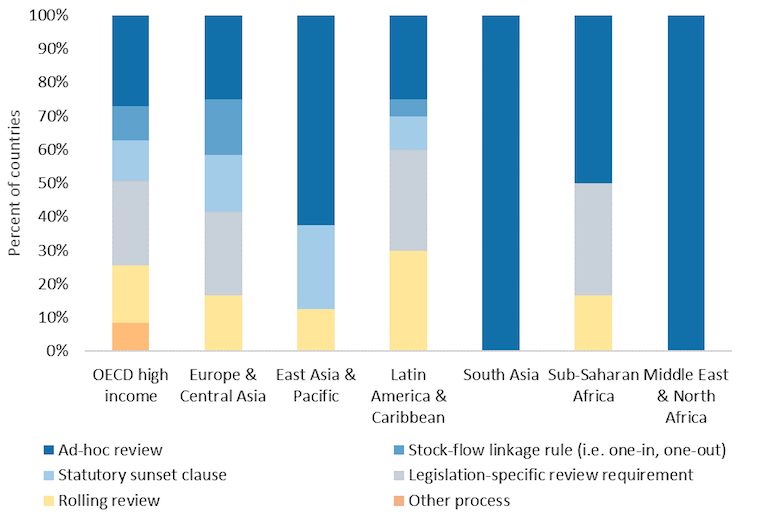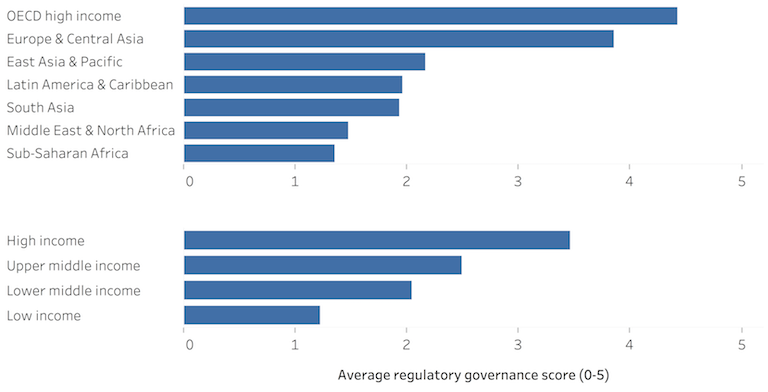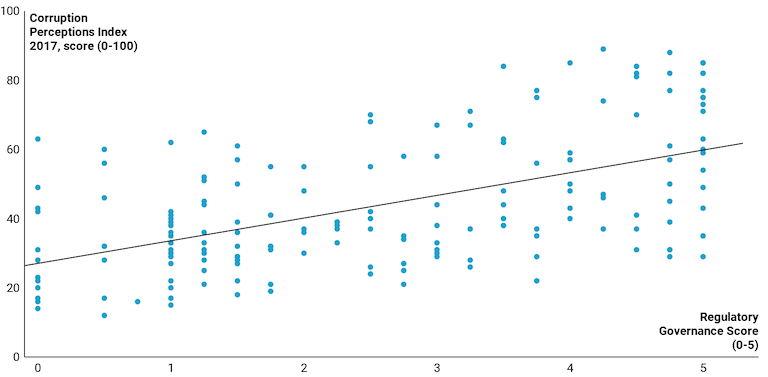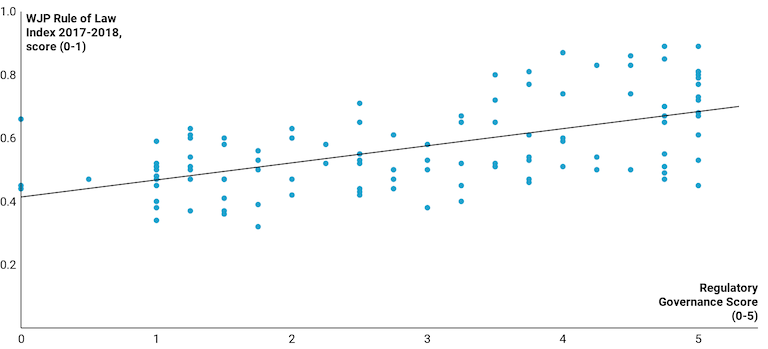Transparency and consultation
Among 186 countries sampled by the Global Indicators of Regulatory Governance, 85 prepare forward regulatory plans in the form of a list of anticipated regulatory changes intended to be adopted in the near future. Eighty-four percent of OECD high-income and Europe and Central Asian economies adhere to this good practice, followed by only about a third of countries in East Asia and the Pacific as well as Sub-Saharan Africa. Providing advance notice on regulatory changes is still relatively rare in the Middle East and North Africa region.
Making these forward regulatory plans available to the public allows for a predictable and transparent regulatory environment. However, low- and lower-middle-income economies do not widely follow this practice; out of 27 countries that do prepare forward regulatory plans, only 15 publish them.
Forward regulatory plans
Most countries in OECD high-income and Europe and Central Asia develop and publicize forward regulatory plans
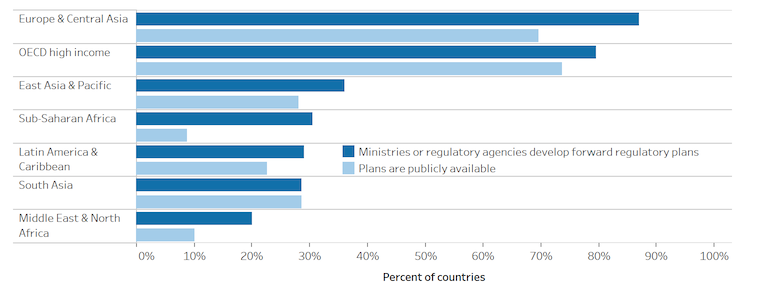
Worldwide, in most countries it is common for regulators to proactively engage stakeholders’ in rulemaking processes. Superficially, in 138 out of 186 studied economies ministries or regulatory agencies request comments on proposed regulations. Such consultations are commonly done through official websites, public meetings, or by reaching out directly to relevant stakeholders. However, in about a third of the 138 economies where such consultations take place, consultative practices are not adopted throughout the entire government and only some ministries consult with the public. Encouragingly, in 68 countries, consultations with stakeholders take place even though they are not required by law.
Reporting back on consultation results constitutes a good regulatory practice. Yet, not all countries that consult with stakeholders share results of such engagements. Countries across all income groups, including Czech Republic, Turkey, Tunisia, Pakistan, Senegal, Vietnam, South Africa and Tanzania, publish draft regulations and solicit feedback from stakeholders but do not report on the results of these consultations. The discrepancy between the countries that carry out consultations without reporting back on the results of the consultative processes is most pronounced in East Asia and the Pacific region, where 84 percent of economies conduct consultations but only 36 percent report back on the outcomes.
Consultations
Middle East and North Africa stands out as the region with the least inclusive rulemaking

The data clearly show that stakeholder consultative processes are widespread in the developed world. And given the high internet penetration, regulators in rich countries tend to interact with stakeholders through designated unified or ministerial websites. About 76 percent of OECD high-income countries and 65 percent of Europe and Central Asian economies carry out consultations through unified websites where all ministries post their draft regulations. Conversely, low-income countries tend to use less effective methods of consultative engagements, such as public meetings or direct interactions with only a selected number of stakeholders.
Medium of consultation by region
Among all regions, South Asia, Sub-Saharan Africa and Middle East and North Africa have the least advanced consultative practices
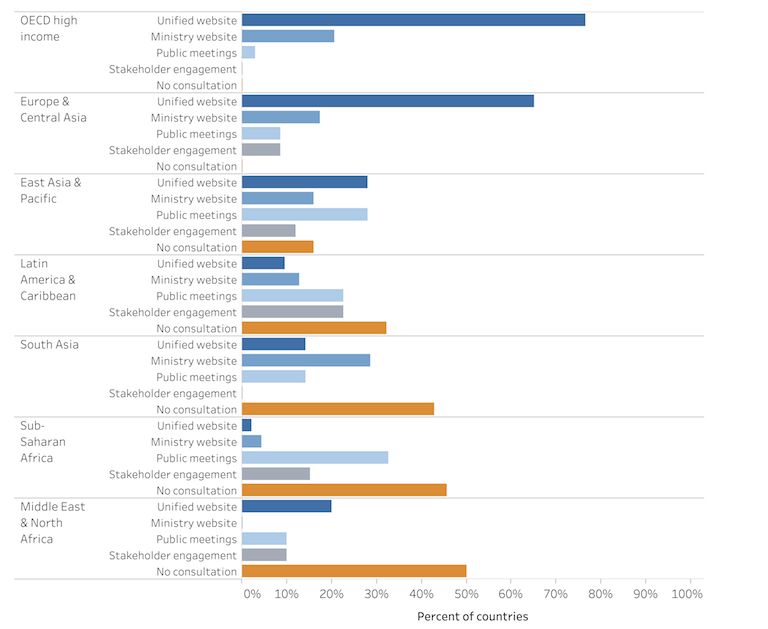
For further details see Trends in Participatory Rulemaking

